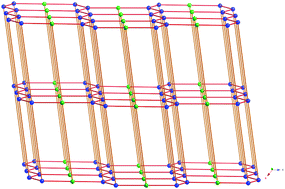Structure and physical properties of substituted malonate divalent metal coordination polymers with dipyridylamine co-ligands: acentric chain, herringbone layer, and novel binodal network topologies†
Abstract
Three divalent metal coordination

* Corresponding authors
a
Lyman Briggs College and Department of Chemistry, Michigan State University, E-30 Holmes Hall, East Lansing, MI, USA
E-mail:
laduca@msu.edu
Three divalent metal coordination

 Please wait while we load your content...
Something went wrong. Try again?
Please wait while we load your content...
Something went wrong. Try again?
G. A. Farnum, J. H. Nettleman and R. L. LaDuca, CrystEngComm, 2010, 12, 888 DOI: 10.1039/B914746B
To request permission to reproduce material from this article, please go to the Copyright Clearance Center request page.
If you are an author contributing to an RSC publication, you do not need to request permission provided correct acknowledgement is given.
If you are the author of this article, you do not need to request permission to reproduce figures and diagrams provided correct acknowledgement is given. If you want to reproduce the whole article in a third-party publication (excluding your thesis/dissertation for which permission is not required) please go to the Copyright Clearance Center request page.
Read more about how to correctly acknowledge RSC content.
 Fetching data from CrossRef.
Fetching data from CrossRef.
This may take some time to load.
Loading related content
